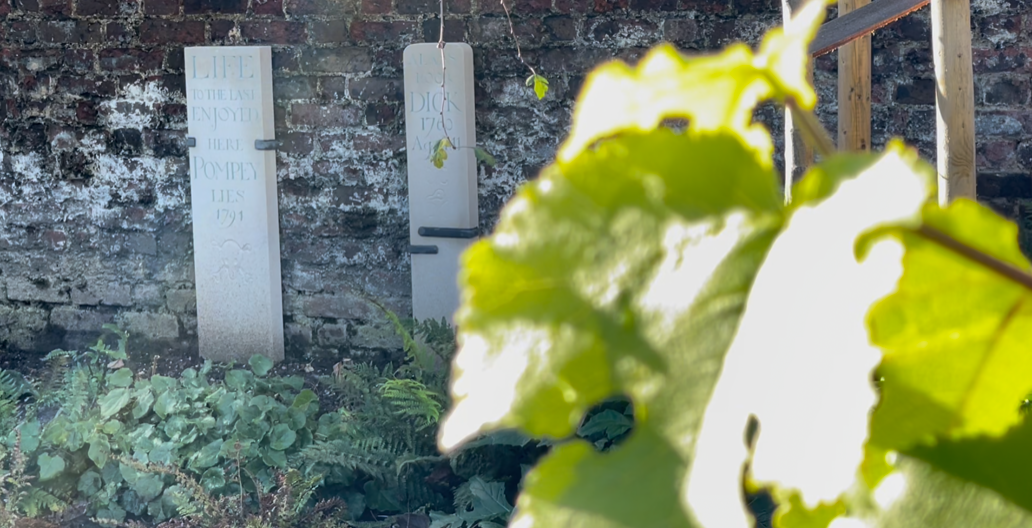
Hogarth Family Pet Memorials
Using Victorian images the two pet memorials from Hogarth’s House have been recreated and installed in the garden, one of the last elements of the Mulberry Garden Project to be completed. The cost has been covered by a crowd-funding appeal and the carving and lettering are the work of Alan Micklethwaite and Tracey Tregidga Micklethwaite.
The best image of the memorial stones is an engraving by Frederick W Fairholt made for Mrs S C Hall’s Pilgrimages to English Shrines, articles published in her husband’s Art Journal 1849-1852. Fairholt also made a convincing sketch of the interior of Hogarth’s studio, suggesting that he and Mrs Hall actually visited the site in the 1850s.
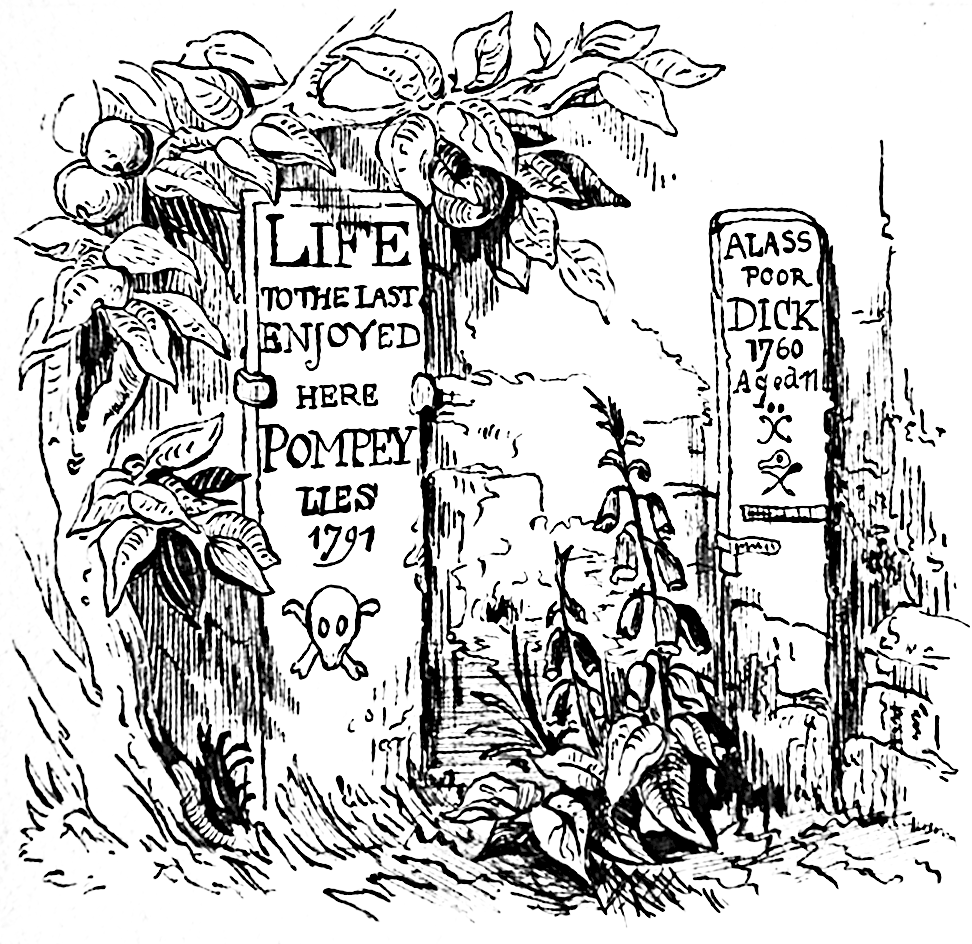
We know that Hogarth was very fond of animals and often included them in his works. Looking closely at the drawing of the stones it is clear than one of them commemorates a pet drake called Dick. He died in 1760 aged 11, so he could have been acquired in 1749 when the Hogarths first bought their country house in Chiswick. The image on the stone may well have been executed by Hogarth himself; it shows a bird skull in profile with an unmistakeable duck’s bill and the two halves of a wish-bone crossed beneath it. (When Edward Walford described the stones in 1878 he stated that it was a pet bullfinch, but the skull does not resemble even slightly the short bill of a finch!)
Whereas Hogarth’s dogs accompanied him everywhere and appeared in his paintings, a drake, however tame and liable to follow, is unlikely to have accompanied him into town or to the homes of clients. If it had done so this would surely have caused a great deal of amused comment. So why was a memorial stone made for Dick the drake?
The Hogarths’ Chiswick house sits within a half acre plot which was formerly an orchard. It is very likely that the family grew vegetables and herbs for the household there and could well have kept a few chickens and ducks for eggs and meat. Female ducks were likely to have been eaten once they stopped laying, but perhaps Dick was an entertaining character and became a family pet. Eleven years is a good innings for a drake, avoiding foxes, theft and road accidents. If Dick was Mrs Hogarth’s pet, perhaps her husband made the touching memorial as a way of offering condolences for her loss? It could also have been something to explain Dick’s absence to visiting children from the Foundling Hospital.
Alongside Dick’s memorial stood one to Pompey. This too has a skull and cross bones, which look like those of a dog. Since Hogarth died in 1764, he is unlikely ever to have met Pompey, who lived until 1790. This was probably the pet of the household of women who continued to use the house in Chiswick long after Hogarth had gone – they included his sister, Anne, who lived until 1771, his wife, Jane, her cousin Mary Lewis and a family friend, Miss Julian Bere. Mary Lewis probably commissioned the stone as she lived on at the House after Jane died in 1789.
The name of the pet provides an important clue as to the type of dog it might have been. There was a popular 18th-century satirical novel called The History of Pompey the Little, or the Life and Adventure of a Lap-Dog by Francis Coventry – it was a best-seller from the time it appeared in 1752. A tiny lap-dog was the absolute opposite of the robust pugs that Hogarth loved; indeed he satirised such twee pets in his painting Taste in High Life where the lapdog upon a cushion is so tiny as to be almost invisible!
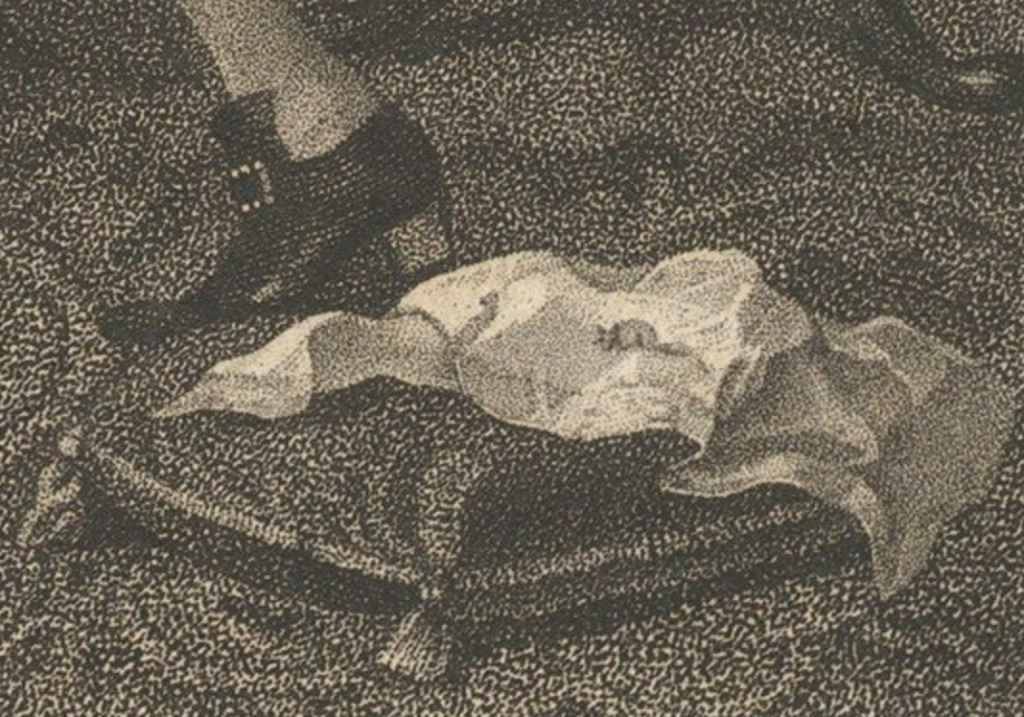
The author dedicated his novel to Henry Fielding, whom Hogarth knew, and one of his stories about Pompey is modelled upon Hogarth’s image of The Distrest Poet. It is hard to believe that the Hogarths did not know the novel well. So the conclusion may be that after Hogarth’s death the pugs were succeeded by tiny, pretty, lap dogs which he would have scorned!
The new memorials have been carved from Portland stone and installed by the south wall of the garden, near the new Weston Studio.
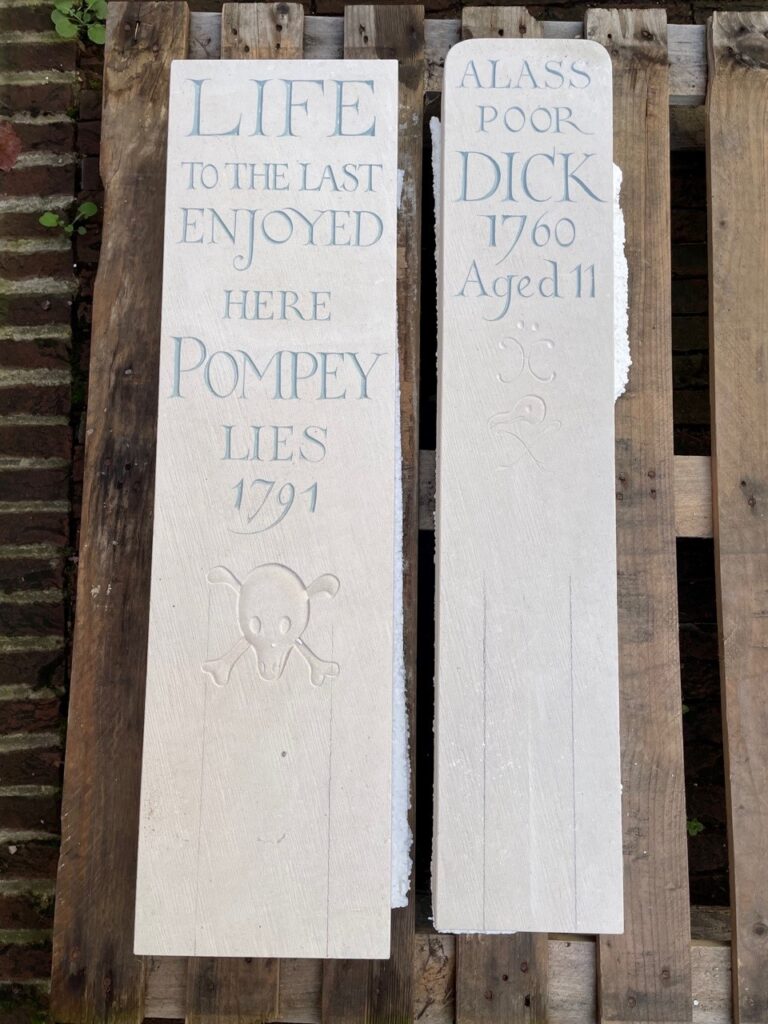
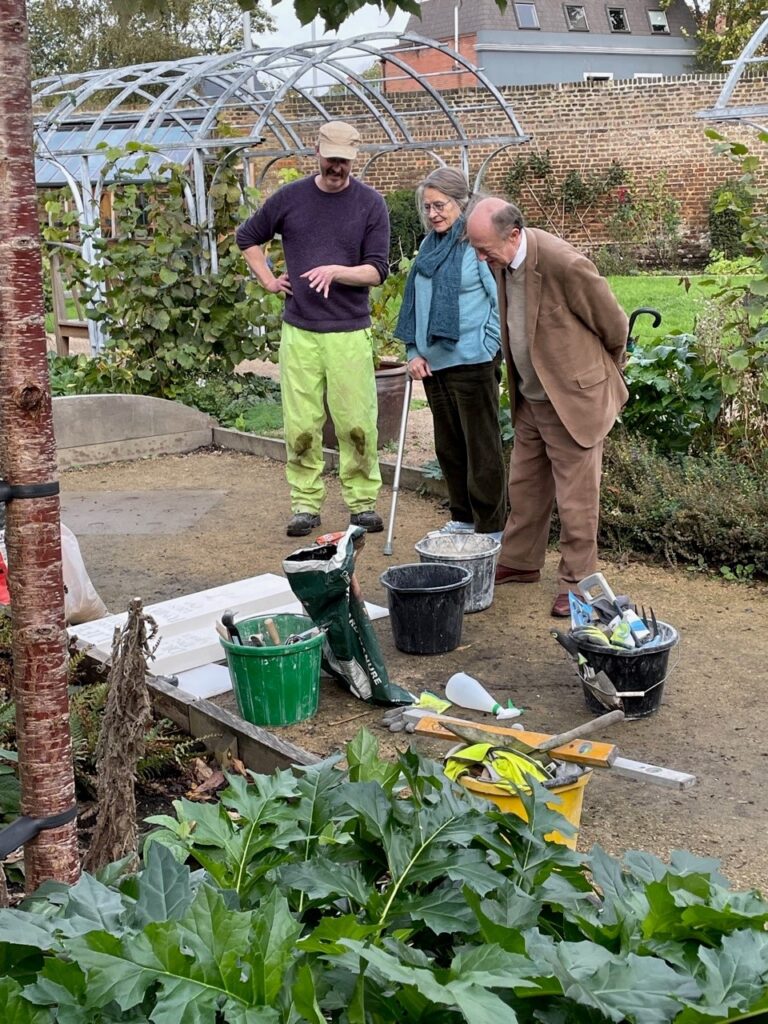
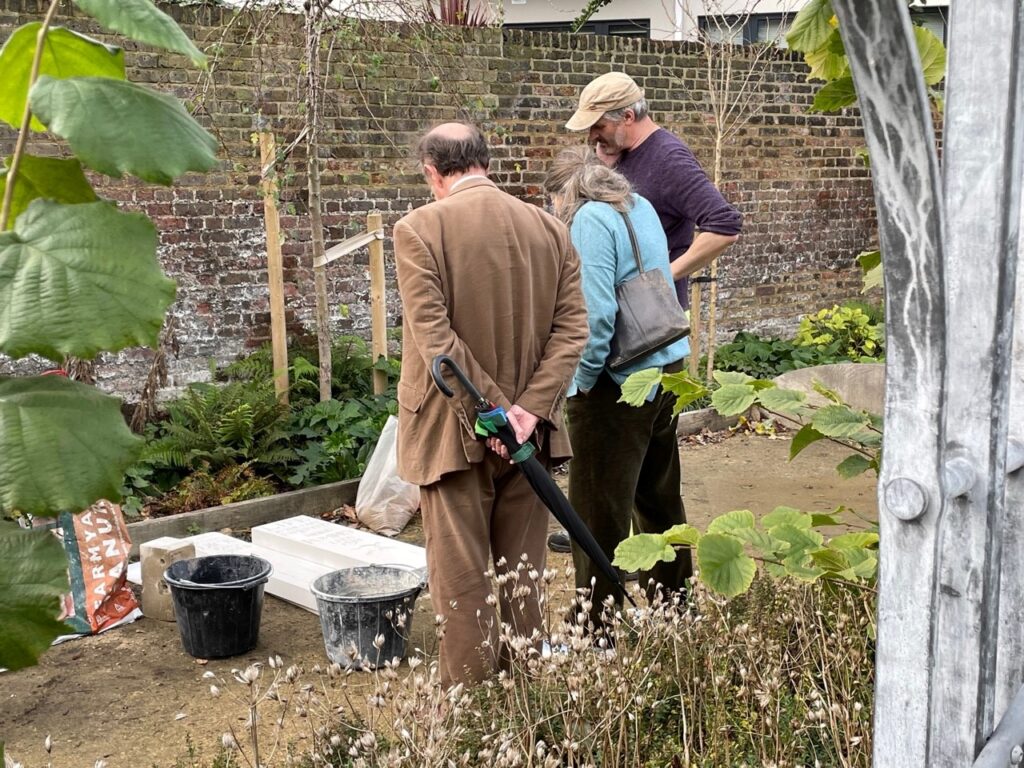
The project was fostered by the William Hogarth Trust which ran a crowd-funding appeal to pay for the work.
A very special thank you to Val Bott FSA MBE, Chairman of the William Hogarth Trust, for providing us with this wonderful write-up on the project, and further details on the original pet memorial stones and their prominence.
